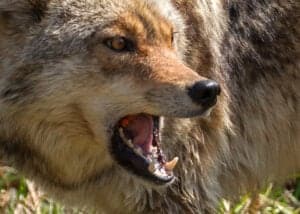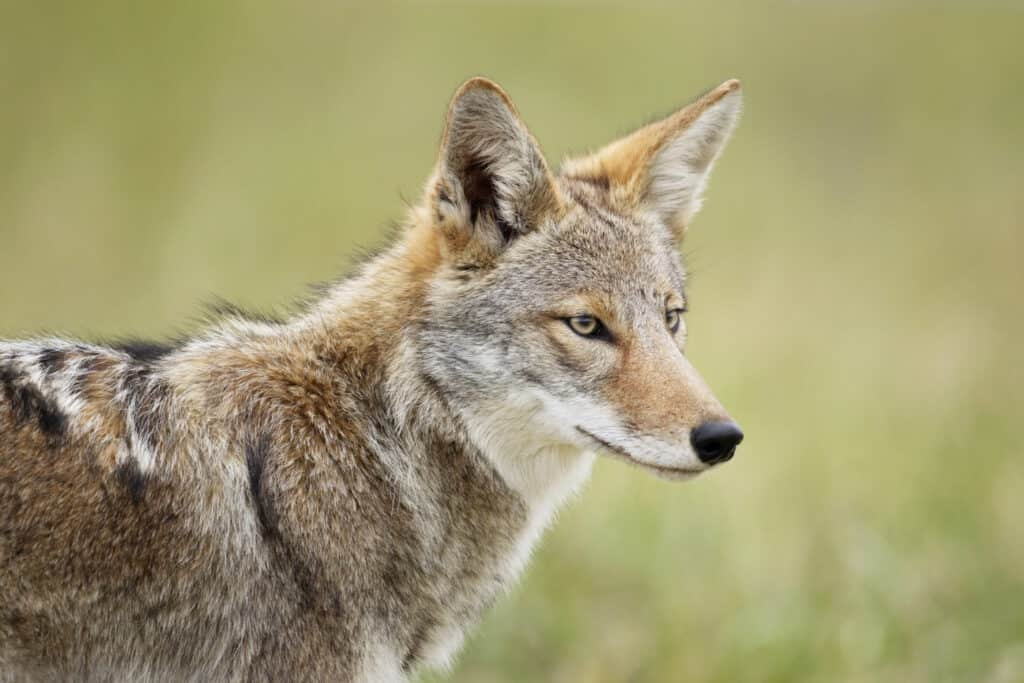
Coyote feces is also known as scat or droppings.
©Paul Tessier/Shutterstock.com
Coyotes are one of North America‘s most problematic creatures. They are smaller than the gray wolf and other wolves like the red wolf but have migrated to more urban areas – making them a menace to cats and small dogs.
If you want to know if there are coyotes in your region, keep an eye out for coyote feces (called scat or droppings). Coyote scat indicates coyote presence in the vicinity.
The main issue with finding coyote poop is identifying it. Continue reading to learn how to spot coyote scat.
How to Tell if a Coyote Pooped in Your Yard
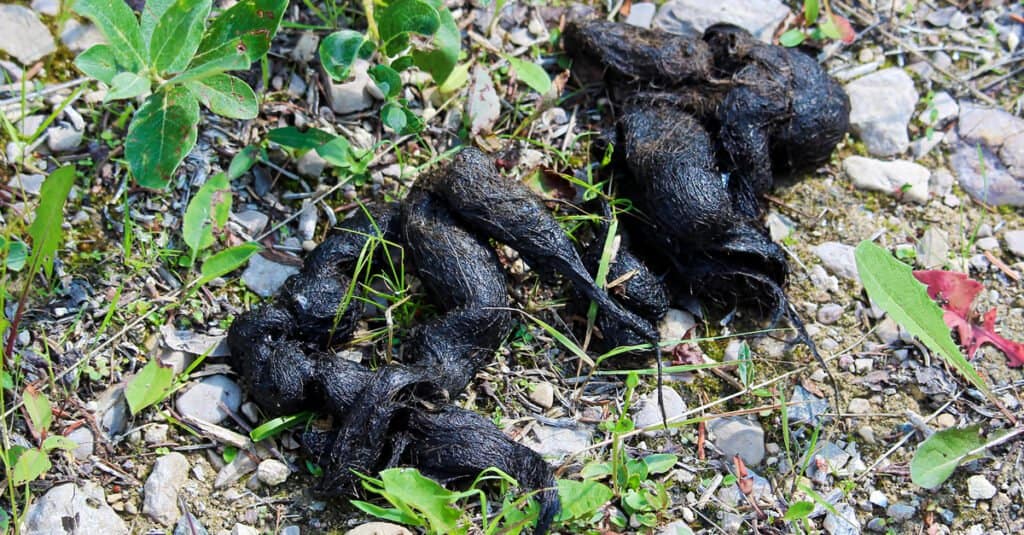
©Amelia Martin/Shutterstock.com
Coyote droppings resemble a knotted rope with multiple pieces. They’re big and tubular. Coyote droppings are usually 3/4 to 1-1/2 inches in diameter and 3 to 5 inches long.
Male coyote poo is larger than female coyote poo, measuring 6 to 12 inches in length depending on the coyote’s size. Their poop has long curly tapering ends, which distinguishes it from other scats.
Coyote feces may contain hair and bones from prey such as rodents, shrews, and rabbits. You may also find seeds, grass, nuts, fruits, and berries that they eat to get rid of intestinal worms.
Is Coyote Scat Dangerous?
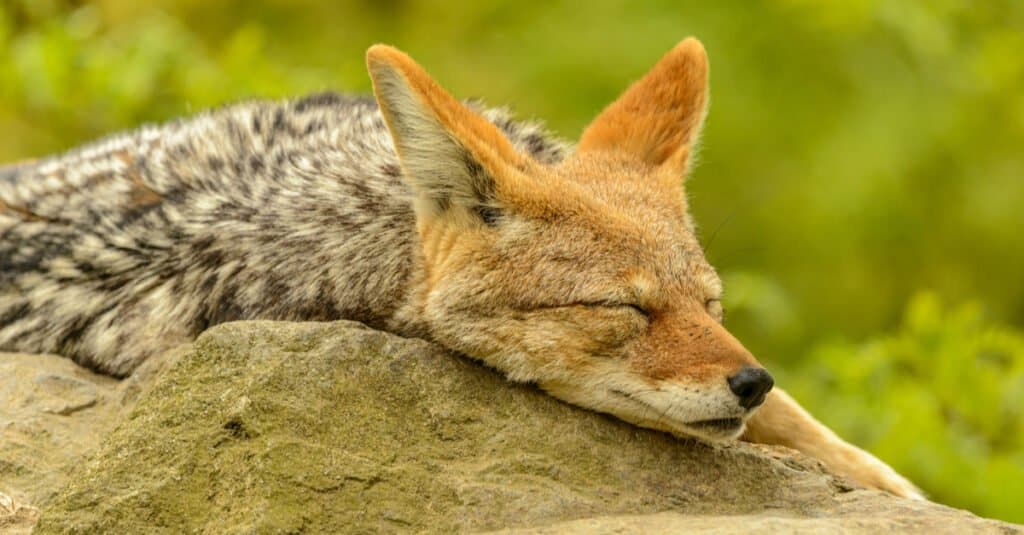
Disposing of coyote scat from your property is crucial if you have pets or children as it can carry diseases.
©Petr Ganaj/Shutterstock.com
Does it indicate something bad to have a coyote scat in your yard? Coyote scat is a sure sign of the animal’s presence. If this is the case, you should take the required precautions because coyotes are known to attack smaller animals such as chickens, dogs, cats, rabbits, and others.
Coyote Scat Risks
Coyote scat identification is vital since their poop is quite contagious. It carries viruses and germs harmful to other animals and humans.
How to Get Rid of Coyote Scat
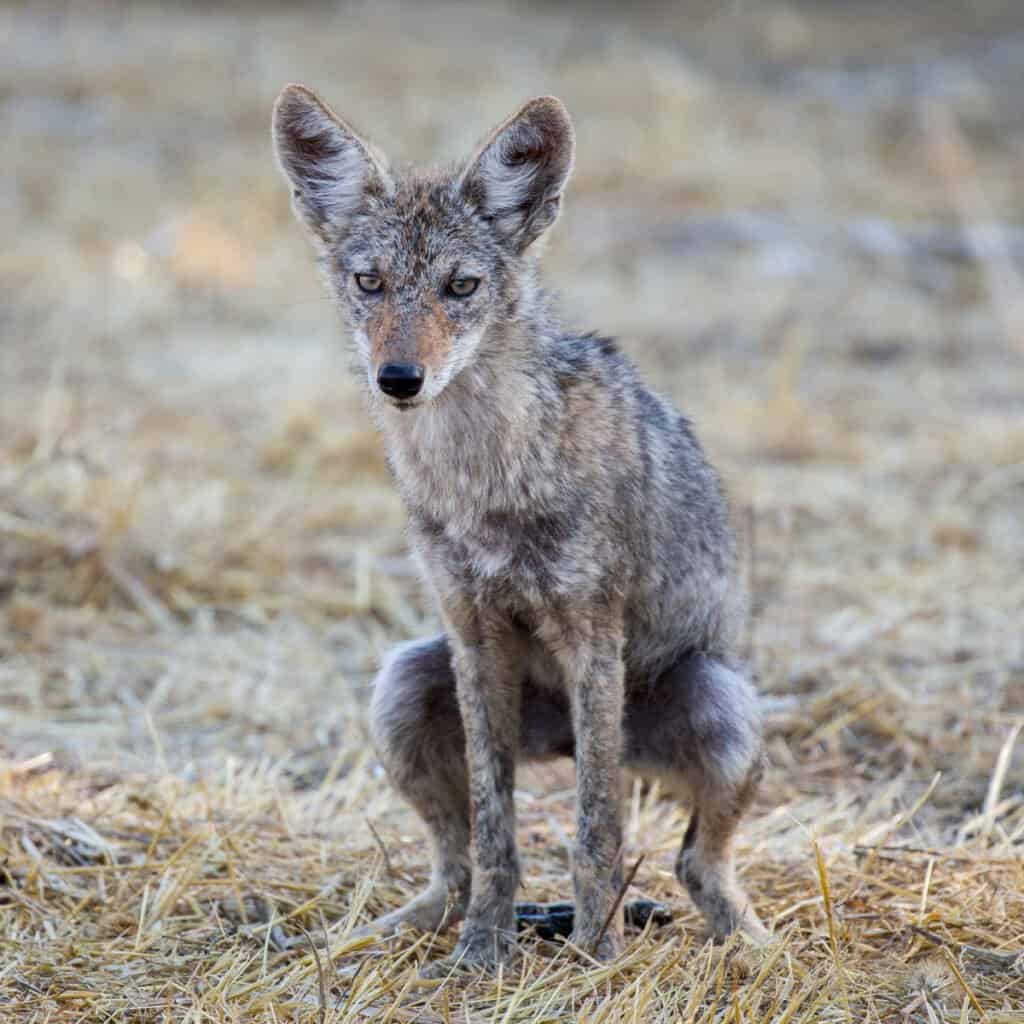
Always wear gloves and a mask when handling animal excrement.
©yhelfman/Shutterstock.com
Coyote poop includes tiny particles that can be harmful to humans. So, when cleaning up feces in your yard, you must follow simple safety precautions.
In no case should you remove the poop with your bare hands. Don’t sniff it or put it near your face or open skin either. Remove it with gloves, shovels, and bags.
Here’s a step-by-step guide:
- Put on gloves and a mask. You may also wear rubber boots or cover your footwear.
- If the feces are dry, wet with warm water.
- Remove the excrement using a shovel then torch it. The flames will destroy any tapeworms.
- The area should be cleaned with hot water and disinfectant.
- Remove gloves and wash hands in hot soapy water.
- Also, wash your clothes separately.
How to Keep Coyotes Off Your Property
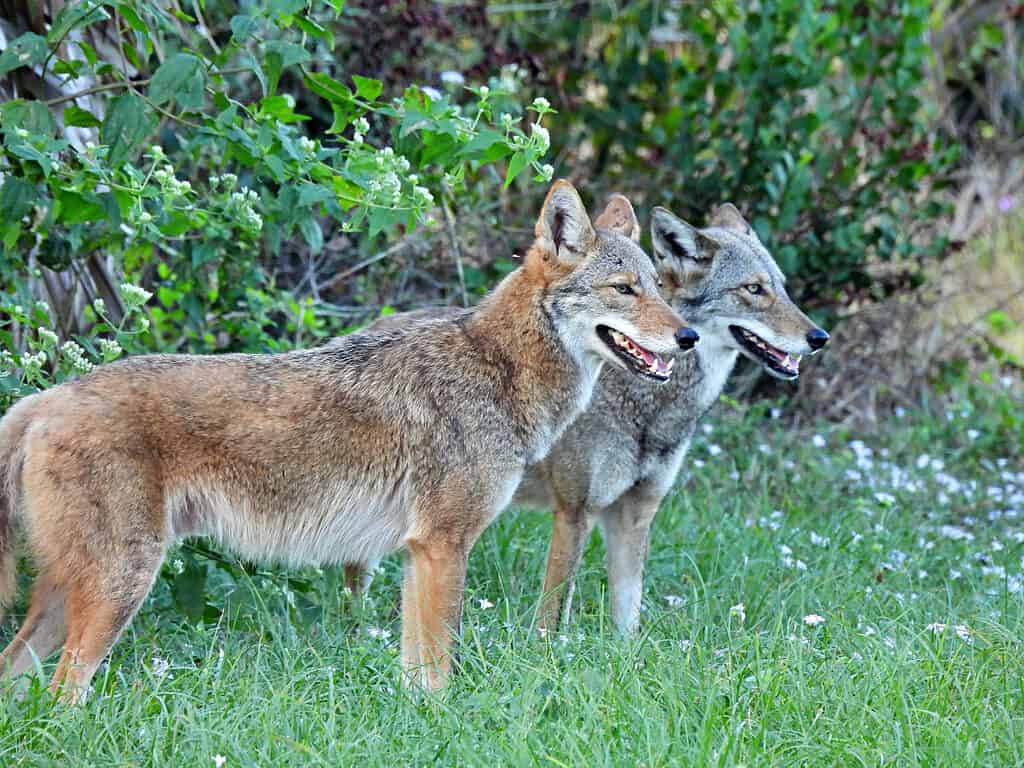
Coyote scat is a sure sign of the animal’s presence.
©iStock.com/passion4nature
Coyotes can be deterred from the area in several ways including:
- Invest in a Sturdy Fence
- Make Sure Your Property Is Well Kept
- Use a Coyote Repellent Spray
- Bring All Pets Indoors
- Bring in a Watch Dog
- Use a Water Sprinkler That Is Motion Activated
Dealing with Coyotes and Their Poop Through Pest Control
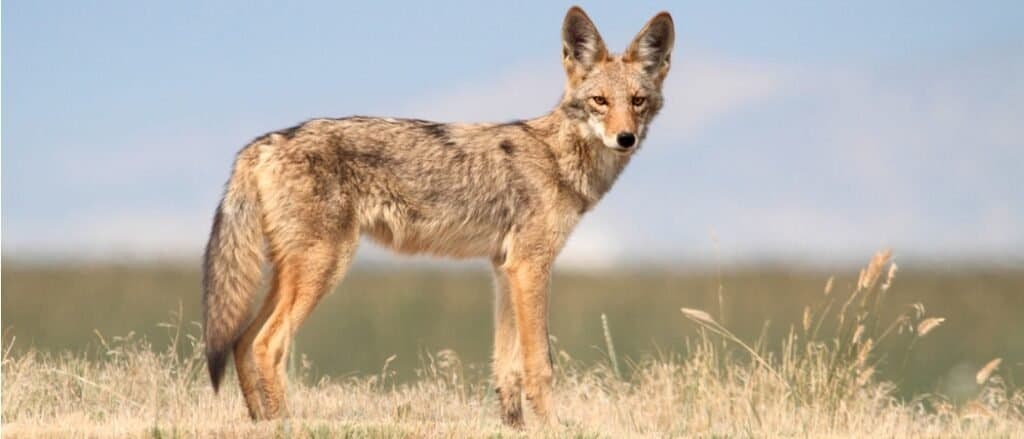
Seeking advice from a trained professional is best before removing any wild animal scat.
©iStock.com/SteveByland
If you’re reading this article, it’s likely that you’ve seen signs of coyotes (such as their excrement) on your property. If it’s a rare occurrence, you may be able to manage it on your own without the assistance of others. However, it’s always a clever idea to seek the advice of a trained professional.
Conclusion
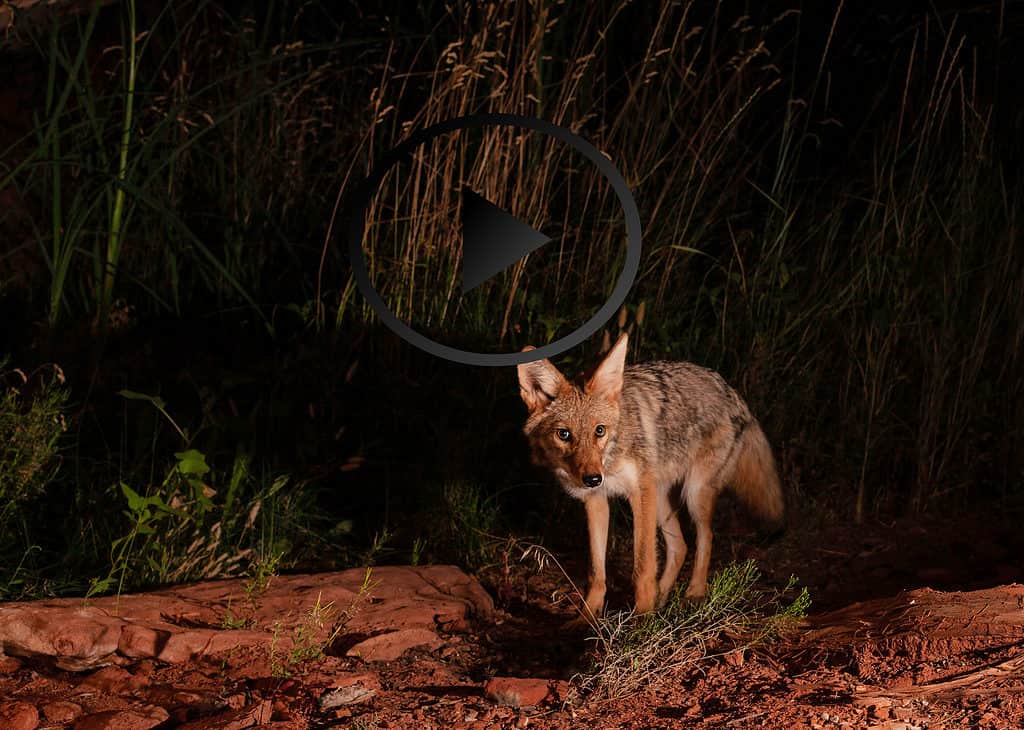
It is vital to take preventative and active measures to ensure coyotes do not become regular visitors.
©MelaniWright/Shutterstock.com
By keeping this information in mind, you’ll easily be able to distinguish coyote scat from that of other animals. Hopefully, the information in this post has helped you identify coyote droppings. After finding their excrement in your yard, it’s time to take the proper precautions to ensure they don’t return to your property again.
Because coyotes have a reputation for attacking smaller animals and pets, it’s important to be cautious and take preventative actions to ensure they don’t become regular visitors to your property.
The photo featured at the top of this post is © Josef Pittner/Shutterstock.com
Thank you for reading! Have some feedback for us? Contact the AZ Animals editorial team.



